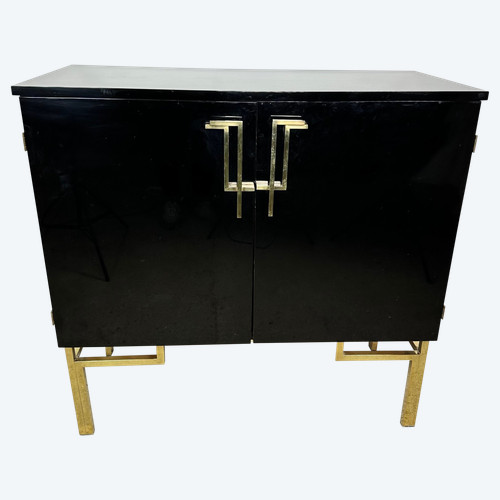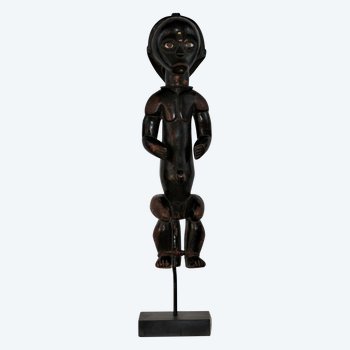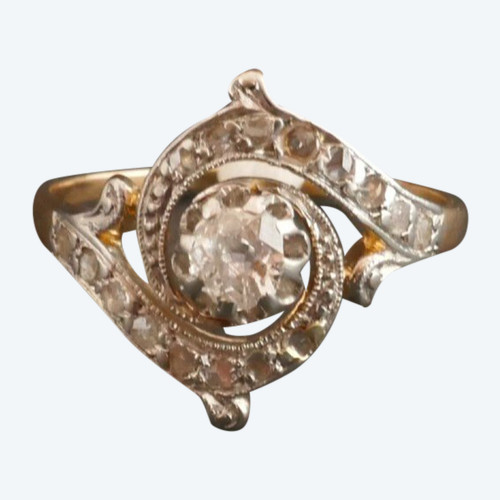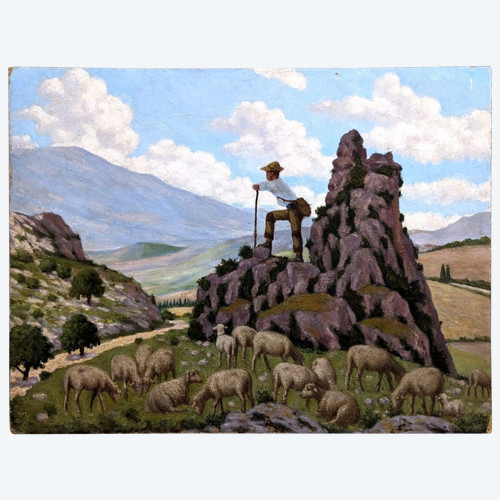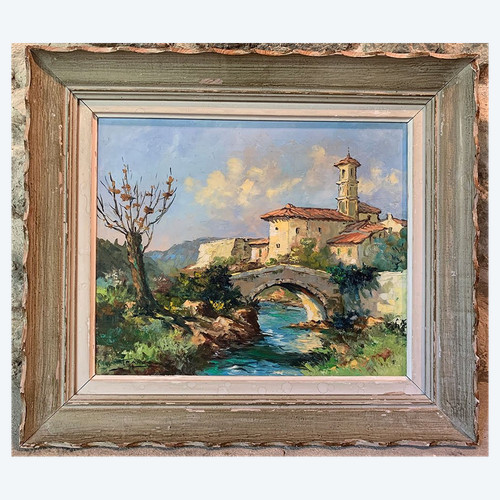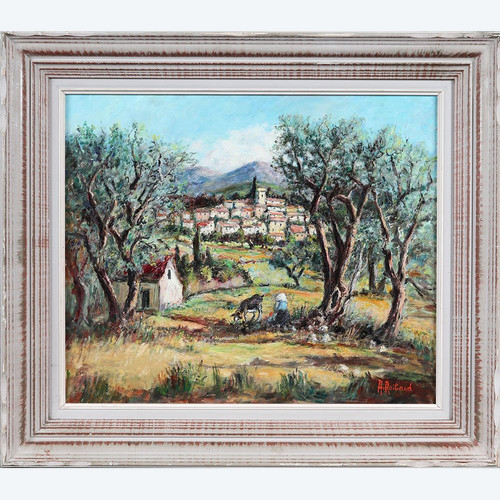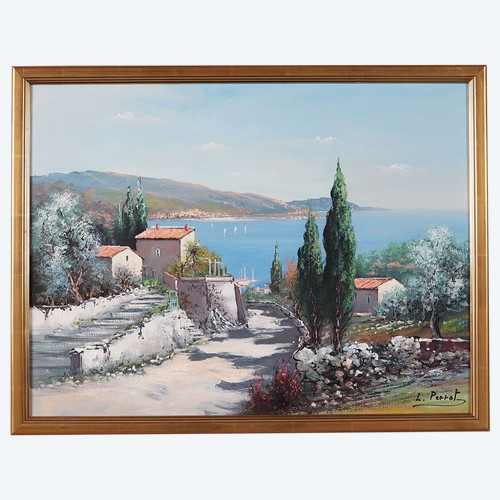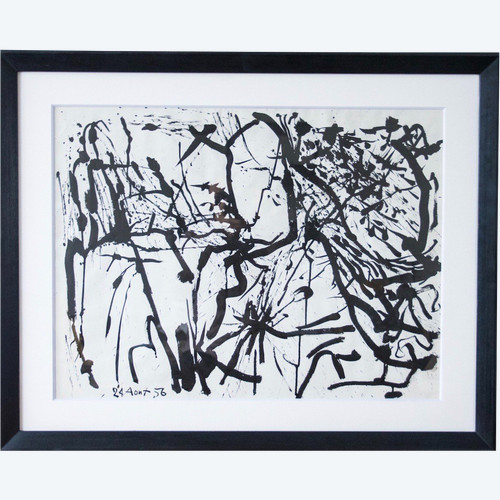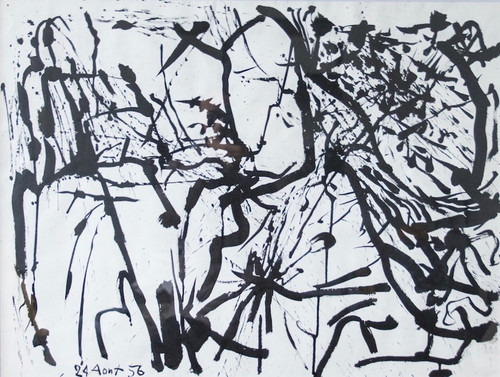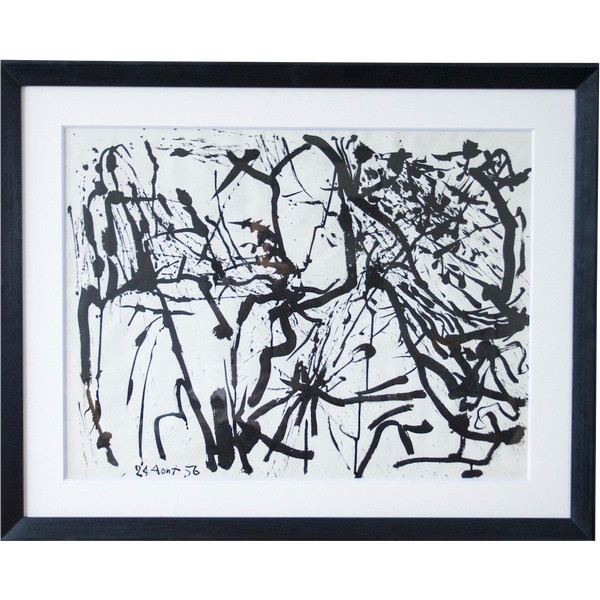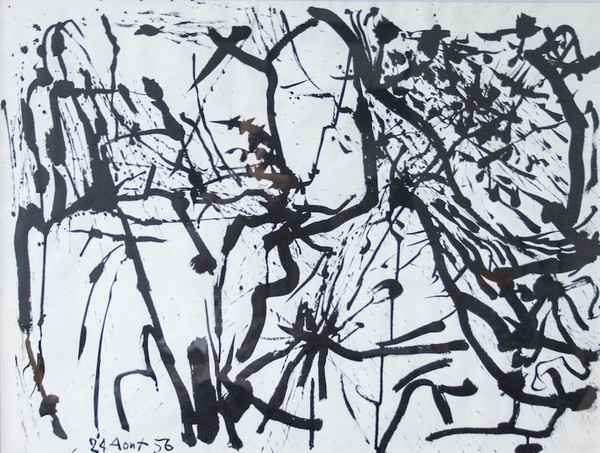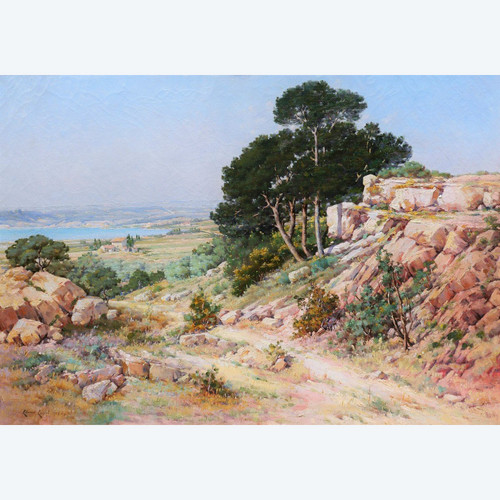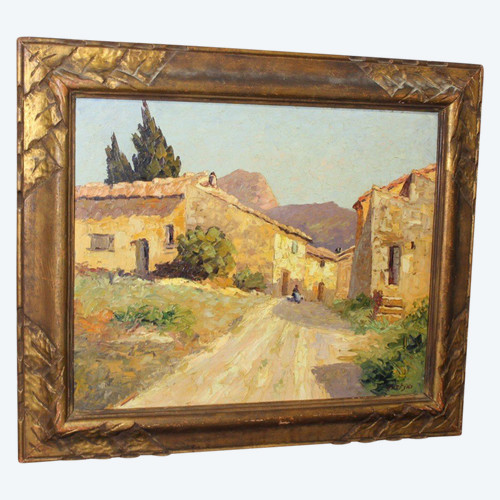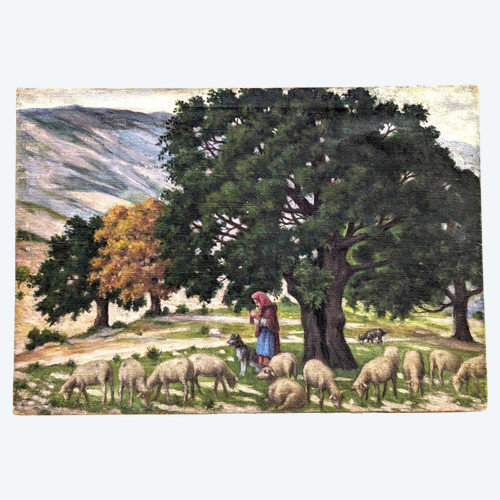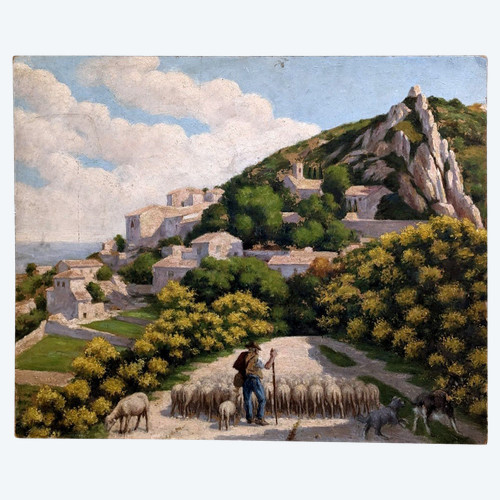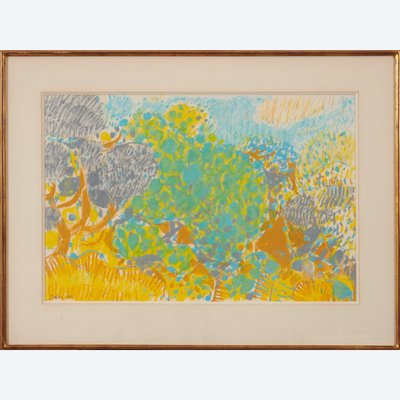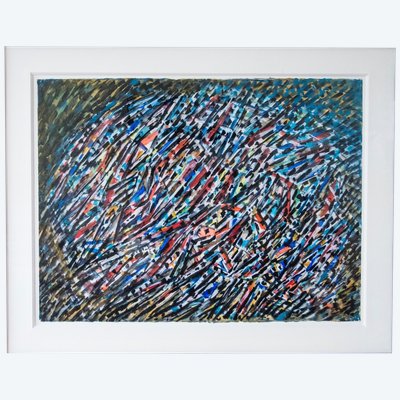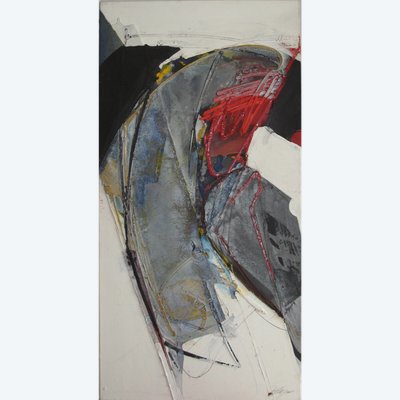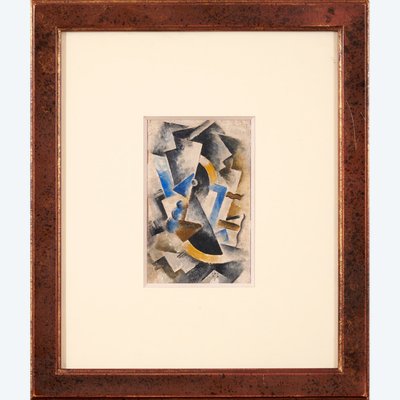This description has been translated and may not be completely accurate. Click here to see the original
"Alpilles Series", Mario Prassinos (1916-1985)
Ink on paper, dated August 24, 1956
Dimensions: 47 X 62 cm - framed 64 X 75 cm
Very good condition
A certificate of authenticity from Catherine Prassinos will be given to the buyer.
About this photograph "Série des Alpilles
From 1951, when Mario Prassinos bought a house in Eygalières, Provence, he made drawings of the hill opposite his home. This series, entitled "Alpilles", was completed in the late 1970s. The work presented here is an early addition to the chronology of this series.
Mario Prassinos's exploration of rocks, faults, gullies and hills in all directions yields signs, the "alphabet of a lived history". From this arrangement of signs, the fruit of the painter's interiorization and meditation confronted with the reality of a motif constantly renewed according to the seasons, climatic conditions and the time of day, he gives us a glimpse of a "lived" nature translated into ample, structured rhythms.
In this way, a moving figure is created in the space of the work, where the deliberate and the random intermingle, bearing witness to the artist's inexplicable creative power and our freedom of interpretation.
And to further accentuate the discrepancy with the reality of the plant motif, Mario Prassinos turns to the singular pictorial style so characteristic of his work. The use of black and white lends power to the work and heightens this discrepancy.
Indian ink, which allows us to get to the heart of the matter with no turning back, and offers rapid, spontaneous execution to instantly capture his inner impression of the motif.
And with a limited choice of means: strokes and dots that enter into a dance of signs reminiscent of calligraphy. In a text about his work on the hill of Eygalières, the artist deliberately limits his means to dots and lines.
For art critic Michel Ragon, Mario Prassinos' work is part of the "Abstract Landscape" vein, a term that brings together artists as dissimilar as James Guitet, Zao Wou-KI, Arpad Szenes, Christine Boumeester and Jean Messagier, both in their inspiration and in their representation of it.
Ref: CA191QT09O
 Art Nouveau Diamond Ring.
1.220 € EUR
Art Nouveau Diamond Ring.
1.220 € EUR

